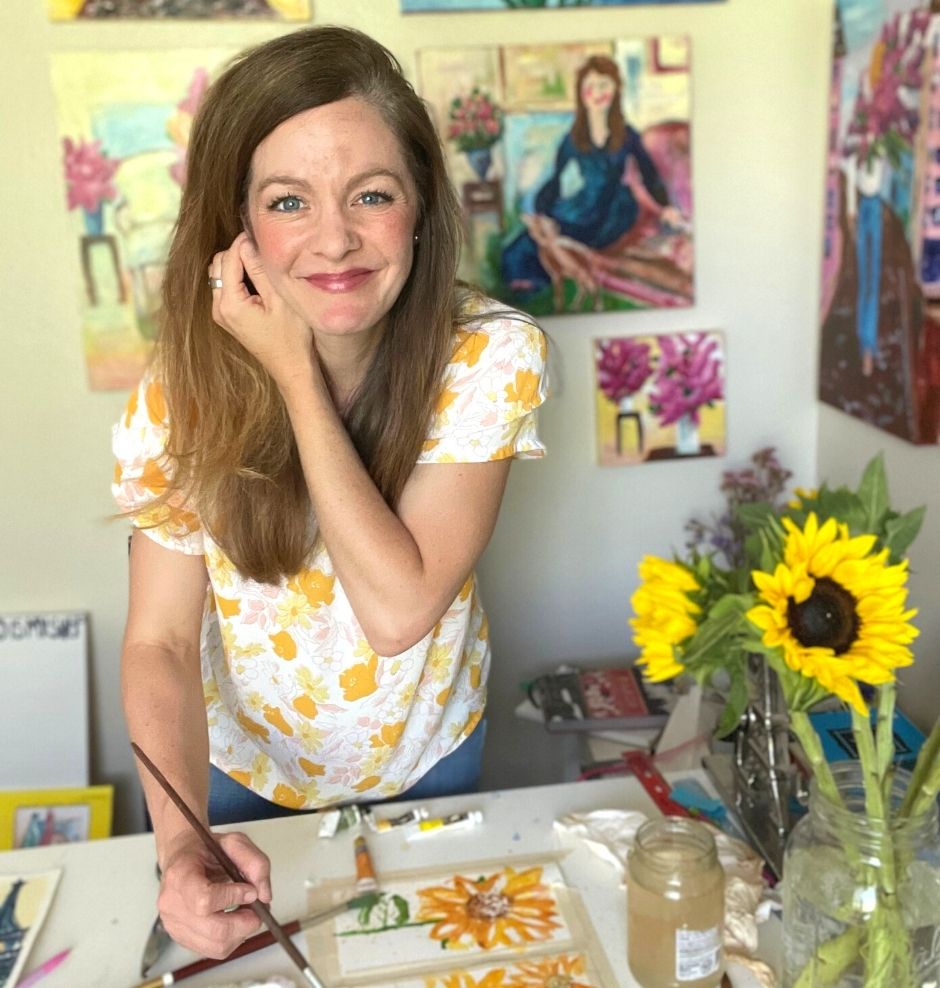There are few things more disheartening when you paint with watercolor than to have the paint merge together and create the dreaded, murky brown color.
Ugh.
Unfortunately, there is not a lot to do once that happens. If the paint is wet another, I scramble with a soft cloth or a paper towel to lift up as much of the water and paint as possible, let it dry, and then try again.
The good news is that the murky, muddy watercolors can be avoided!
You can create eye-catching pieces with watercolor with a splatter-paint style, like in this field of flowers piece featured above.
(This paint-with-me is one of the projects in the newly released
Exuberant Flowers course).
In order to make sure the watercolor paint pops off the page and doesn't merge into mud, here are seven helpful tips.
7 Tips to Create Splatter Art that Sings
1. Use different sizes of paint brushes to get different sized splatters.
Using different sizes will create more variety. The lighter colors can be more generously applied with the larger paintbrushes. The darker the color, the smaller the brush I use.
2. As the painting gets closer to being finished, use smaller brushes for smaller splatters.
Towards the end, the last few layers of splattering really provide the pop for the painting. Plus, the splatters tend to keep their shape when they are smaller (vs. merging and dripping and moving around).
3. Let the paintings dry between layers.
Unless your goal is for the colors to merge, let them dry.
4. Work on more than one painting at a time.
I work on more than one splatter-style painting to ward off my impulsive nature! Inevitably, I want to keep splattering or not let it dry long enough and create a bit of a mess. This can be avoided by working back and forth on two (or more) different paintings.
5. Enjoy the process of splattering.
It's kind of like frosting a cake or cupcakes. There's something about gentle, rhythmic motion that is both soothing and invigorating. It is easy to want to get to the end, but I've found the paintings come out better when I enjoy the process of splattering.
6. Choose colors that "sing" together well.
Be careful of having too many dominant colors in one painting.
7. Be very careful when using both reds and greens in the same paintings.
When these colors mix on the paper, they turn to brown. This can be used to your advantage, but this is best done with careful intention.
I hope this helps you have fun – and success – when creating splatter style art. These tips were meant to accompany the course, Paint Exuberant Flowers, but it will work for all types of splatter art.
Interested in learning more about the Exuberant Flowers Splatter Art course?
Click on the button below to learn more!




